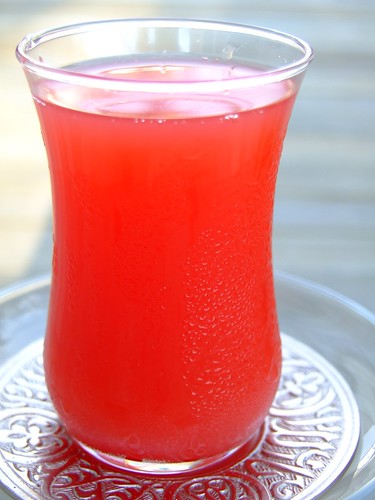Gourmet Weekly + Slow-roasted Tomatoes

I'm a sucker for cooking magazines, but I'm not usually a fan of e-newsletters. I love the convenience of the internet, but in the whirlwind of our technology-savvy (and perhaps somewhat addicted?) culture, there is something soothing about settling on the couch with a blanket, mug of tea, a bright, glossy magazine in your lap, and a quiet hour to read.
In my mind, however, there is one exception to the monotony of most e-newsletters. Gourmet Weekly provides just enough information to get you thinking (and learning) about fun new gadgets and ingredients, in addition to showcasing seasonal recipes you might otherwise have missed. And best of all, it's free!
Last week they provided links to a few fabulous tomato recipes, including Provencal Oven-roasted Tomato Sauce and Slow-roasted Tomatoes. I've already raved about the tomato sauce; this week, we discovered the salty-sweet, intense, sunny flavour of the oven-dried, slow-roasted tomatoes. They're positively addictive, and I'm amazed that we didn't eat them all the moment they were cool enough to handle!
For the most part, I'm not a huge fan of sun-dried tomatoes, but these are very different, and oh-so-much better. I used the small, sweet Orange Banana plum and the tiny yellow pear tomatoes from the farm, and I made a few batches with garlic and a few without.
One batch had the misfortune of turning into tomato-scented charcoal; I learned quickly that not all tomatoes will need the full 8 hours in the oven. I recommend starting with 4 hours and adding one-hour increments- tasting as you go- as you need them.
A few epicurious reviewers have had success freezing them, so I packed the chewy, moist slices between layers of waxed paper, sealed up the packets with sheets of freeze-tite, and into the freezer they went! I have a feeling that this will be a great way to transform the unremarkable hothouse tomatoes you find in most New England grocery stores during the winter.
Our friend A has gotten everyone hooked on the combination of sun dried tomatoes and smoked gouda, and I think these will be a perfect stand-in for the tomatoes at a winter celebration- New Years Eve, perhaps?




































